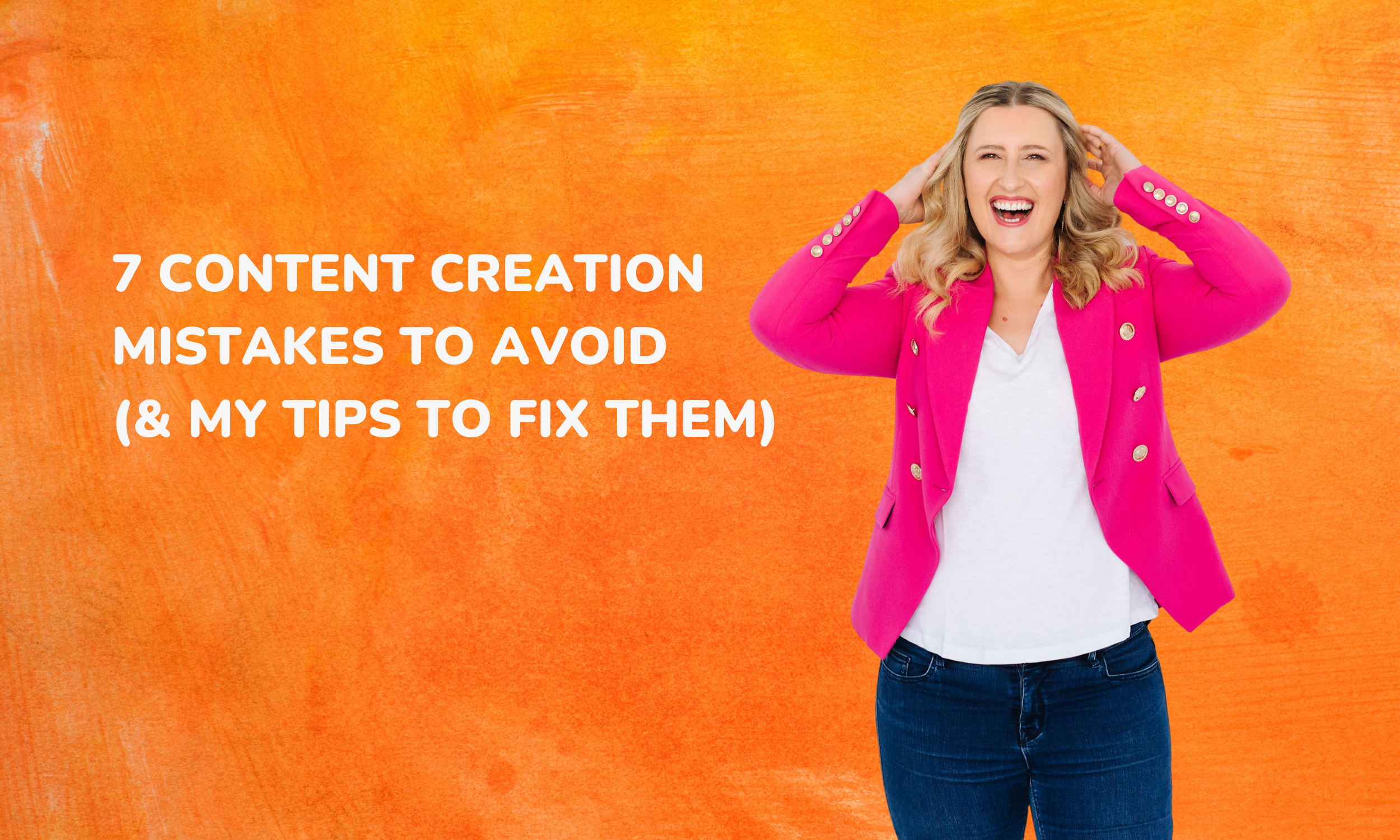7 Content Creation Mistakes to Avoid (& My Tips to Fix Them)
/As an SME, content creation is something you spend a lot of time doing. If you’re not actually doing it yourself, you’re definitely investing in someone to do it for you.
Time, money and energy.
Content is king, and it takes ALL of these things to get it done.
But what does it take to get it right?
Here’s my top seven content creation mistakes you might be making – and how to fix them so you can get a better return on your content investment.
1. Not knowing your audience
It’s the number one rule in building brand story, and it’s the number one rule in creating content too.
If you don’t know who you’re creating content for, then how can you create and position content that will attract, connect and convert them?
Be clear on their demographics and psychographics, including where and how they like to get their information, their preferred content topics, the marketing message that will answer their problems and what their objections might be.
And where are they at in the buying journey when they see this piece of content?
The more you know about them, the better you’ll be placed to create content they’ll love.
If you don’t know where to start when it comes to understanding your tribe, download my free workbook here.
2. Failing to define your content strategy
Your content strategy should support your business and brand strategy.
If you don’t get clear on how your content supports your business goals, then you’ll end up investing a lot of time and money in creating content that does absolutely nothing.
A documented content strategy with an editorial statement that states who your content is for and what its purpose is will help you create content with cut-through.
Make sure your strategy includes an editorial calendar that outlines what content you’re going to publish and when – the key to staying on top of content creation is having an editorial process that lets you manage it in a way that works for you. There are plenty of project management tools to help you with this, or you can simply use a spreadsheet.
A content strategy will also help you make sure that you’ve considered the importance of Search Engine Optimisation (SEO), the keywords you should be targeting and what you should be doing to optimise your content for being found online.
3. Not understanding the content that already exists
You might have heard the phrase that all good writers are good readers.
When you’re creating content for your business, it’s important to know what the content landscape looks like.
What other content exists about your industry, theme or topic? Is it good content? Or not so good? What’s ranking at the top of Google and can you make it better?
Be a content librarian – subscribe to relevant industry sources, and even follow your competitors. What are they doing well that you should follow? And what gaps are they leaving that you can fill for your audience?
How can you create a point of difference that will make you stand out in all the content that’s available out there?
4. Falling into the trap of more
It’s an easy trap to fall for – thinking that you have to be everywhere, all the time, creating all the things.
But more isn’t always better.
Before you create any piece of content, you need to ask yourself WHY?
Why is this piece of content important for my audience? How will it help them choose my brand over others? Why is it needed?
Don’t add to the noise – approach every piece of content with a clear purpose for your business and your audience.
5. Forgetting to evolve
Marketing and the technology available to it is constantly evolving.
While there will always be a place for an eBook, or white paper, or blog, or podcast, it’s also important that you make sure you’re evolving your content creation.
Evolution will look different for everyone – perhaps you’re testing content formats that are new to you. Perhaps it’s that you’re using AI to help you plan and deliver your content. Perhaps it’s keeping up with the ever-changing landscape of social media.
Evolving doesn’t have to mean jumping at every new thing that comes your way (don’t fall into the trap of more!). But it definitely means not resting on your laurels.
6. Not using your content effectively
All those who have created a piece of content and only published it in one place – put your hands up!
We’ve ALL done it. All of us. Me included.
But effective distribution of the content that you’ve invested so much in is really, really important.
Make sure you’re leveraging your content with an effective repurposing strategy. Put it in all the places. Market it. Then market it again. And again. And again.
7. Failing to link your content to ROI
Marketing Measurement is a challenge for all businesses – but especially SMEs.
What should you be tracking, how should you track it and when on earth will you have the time to track it?
But you do want to be clear on how your content is creating sales for your business, by tying its creation directly to your business goals – and one of these is revenue.
How is the content you’re creating leading to sales, either directly or indirectly?
Is it creating engagement? Building your list? Converting your ideal client?
And if not, why not? What tweaks could you make to what you’re doing to improve your return on investment?
The only way to know, is to measure in the first place. So if you aren’t doing this already, there’s no better time than now.
Is it time to make your content work harder for you?
Taking a strategic approach to your content creation will always make it work harder for you.
Know your audience, align your content creation with your business goals, have a content strategy that guides you, repurpose your content wherever you can and remember that you don’t have to be everywhere – you just have to be where your ideal customers are.
What can you change in your approach to content creation today to make it deliver a great return on investment for your business?



